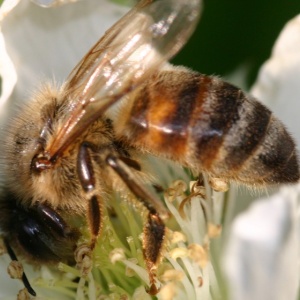
This paper in Biological Conservation argues that the role of pesticides in driving biodiversity loss deserves renewed emphasis, quantification and amelioration. The authors present their views on how conservationists should support integrated approaches, for sustainable agriculture and rural development planning, that simultaneously address food security, pesticide use and biodiversity conservation.
The authors argue that after the bans imposed on most organochloride and organophosphate insecticides (such as DDT), conservation practitioners lapsed in the attention they paid to pesticides. They highlight the negative impacts pesticides have today on pollinators as well as the wider environment.
While recognising the critical importance of other drivers for continued biodiversity loss – resource-intensive models of development and consumption, invasive species, nitrogen pollution, and climate change – when it comes to pesticides, the authors recommend six key areas where conservationist should focus their attention:
- Recognise agricultural impacts extend beyond land clearing – intensification does not necessarily reduce the area under agriculture or slow the rate of agricultural expansion, and the impacts of pesticides on non-target species is influenced by landscape context.
- Integrate lower external input, high diversity farming into landscape conservation – in some conditions organic agriculture comes close to matching conventional agricultural yields whilst increasing on-farm biodiversity.
- Lobby for more investment into research independent from the agrochemical industry – more effective equipment, rationalised pesticide use, and sustainable alternatives all reduce negative effects.
- Support efforts to reduce food system inefficiencies and improve consumer diets – reduced consumption of intensively-raised meat is critically important, as intensively grown crops to provide feed increase net pesticide usage.
- Support planning of natural areas and the surrounding agricultural matrix – plans taking better account of contamination pathways, sensitive habitats and species-rich areas (in both temperate and tropical landscapes) can help limit and contain pesticide contamination.
- Engage with international agencies (The International Union for Conservation of Nature, Convention on Biological Diversity and United Nations Environment Programme) to urgently develop global policy for reduction, more efficient and safer use of pesticides – only by innovation can sustainable production systems help deliver the Sustainable Development Goals (e.g. goal 12.4).
The authors conclude that bringing pesticide reduction into policy – with evidence based withdrawal of the most harmful pesticides – biodiversity, farmers and consumers will all benefit.
The Sustainable Development Goals can be found here.
Abstract
Conservation biologists should seek to work with those involved in sustainable agriculture and rural development in expanded integrated approaches to reduce pesticide harm to humans, biodiversity and environmental services. Despite new evidence, conservation organisations have tended not to fully recognize the impacts of pesticides on biodiversity, and current conservation strategies pay little heed to addressing this threat. A comprehensive suite of strategies are required to reduce and rationalize pesticide use and mitigate risks to species conservation. This paper proposes six steps for conservationists to address pesticide problems: (1) revisit the land sparing versus land sharing debate and include the external impacts of agriculture as vital components in systematic conservation planning; (2) redefine narratives on intensive agriculture and support emerging forms of sustainable intensification; (3) focus and inform on improved delivery mechanisms and monitoring legal use to achieve better pesticide targeting and a major reduction in volumes used; (4) support efforts to reduce wastage and inefficiency in the food system by promoting technical changes and informed consumer choice; (5) design and encourage resilient temperate and tropical landscapes that minimise pesticide contamination on farms and at landscape scale; and (6) develop comprehensive policy responses to promote both better alternatives to synthetic pesticides and limit the use of the most harmful pesticides.
Reference
Dudley, N., Attwood, S.J., Goulson, D., Jarvis, D., Bharucha, Z.P. and Pretty, J., 2017. How should conservationists respond to pesticides as a driver of biodiversity loss in agroecosystems?. Biological Conservation, 209, pp.449-453.
Read the full article here (paywall)
For further discussions on how the debate on agriculture and the environment could be made more constructive, focusing on food production and its trade-offs, see our previous summary of Elena Bennett’s Nature commentary, Changing the agriculture and environment conversation and the subsequent FCRN discussion forum on Land sharing vs Land sparing.







Post a new comment »